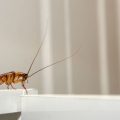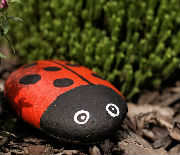
Did you know there are over 650 species of spiders in the UK, each playing a unique role in our ecosystem? While some, like the harmless garden spider, are admired for their beauty, others, such as the infamous false widow, spark fear with their venomous bites.
Whether you’re an arachnophobe or an admirer, this guide explores the most common spiders, revealing their surprising secrets and answering the question: are UK spiders more dangerous or beautiful?
Table of Contents
1. False widow spider in the UK – identification, risks, and bite myths
The false widow spider (Steatoda nobilis), often mistaken for the notorious black widow, is one of the most notorious spiders in Britain. Known as the UK’s most venomous spider, its reputation has been shaped by a mix of facts and myths.
Despite their notoriety, false widow spiders rarely pose a significant danger to humans. However, understanding their behaviour, habitat, and bite symptoms can help dispel unnecessary fear.
How to identify the false widow spider
False widows are medium-sized spiders with a glossy, round abdomen. Their colour ranges from brown to black, often featuring cream or white markings that resemble a skull or intricate patterns. Adults typically measure about 7–14mm in body length, with males being slightly smaller than females. These spiders have long, slender legs, giving them a distinct, elegant appearance.
Where do false widow spiders live in the UK?
False widows are commonly found in urban areas, mostly on the southern and eastern UK coast, as well as Surrey. They prefer sheltered spots like attics, garages, and garden sheds. Outdoors, they build their webs around buildings and fences, and under roofs.
Originally native to Madeira and the Canary Islands, false widows were first documented in Britain in the 19th century. Since then, they have spread across the country due to milder climates and global trade.
Are false widow spider bites dangerous?
While false widow bites are uncommon, they can occur if the spider feels threatened. The symptoms include redness, swelling, and radiating pain around the bite site. Severe reactions are rare but may include nausea, fever, or pain. However, the majority of false widow bites result in mild symptoms that resolve on their own
Check: Spider Bite or a Bed Bug Bite? – How to Tell the Differences
Myth-busting: the truth about false widow
Contrary to popular belief, false widows are not aggressive. Their venom is far less potent than that of true widows. It is intended to paralyze small prey rather than harm humans, and most bites heal without medical treatment. False widow spiders play an essential role in controlling insect populations, making them more helpful than harmful in most cases.
Check also: Do Spiders Hate Conkers?
2. Tube web spider – the secret architect of Britain’s urban jungle
The tube web spider (Segestria florentina) is one of the most striking spiders in the UK, known for its bright green fangs and fascinating web-building behaviour. Despite its intimidating appearance, this spider is rarely a threat to humans.
Identifying the tube web spider
The tube web spider is characterised by its long legs and a body that typically measures the size of a one-pound coin. Male tube web spiders range from 10 to 15 mm in length, while females can reach up to 22 mm, making them one of the largest spider species in the UK.
Where to find tube web spiders in the UK?
Tube web spiders can be found in the southern regions of England including Bristol, Dover, Cornwall, Sheffield, Gloucester, and Southampton but their range has expanded over recent years. These spiders inhabit the holes, crevices of buildings, brick walls, fences and tree barks.
They build distinctive tubular webs, often extending deep into holes or gaps, providing a retreat where they wait to ambush their prey.
Is a tube web spider poisonous?
While tube web spiders can bite humans, incidents are rare and usually occur when spiders are provoked or accidentally handled. However, their venom is not dangerous – a spider bite can cause mild to moderate pain, but poses no serious health risks to most individuals. The discomfort typically disappears within a few hours, with no lasting effects.
Check also: Do You Really Swallow Spiders When You Sleep?
3. Lace Webbed/Weaver spider
The lace webbed spider (Amaurobius similis) is one of the most frequently spotted spiders in British homes and gardens. Known for its intricate web designs and nocturnal habits, this spider plays an essential role in controlling insect populations. While harmless to humans, its bite and appearance often spark curiosity.
How to Identify the lace webbed spider
Lace webbed spiders are medium-sized, with a body length of 7 – 12mm. Their bodies are dark brown with yellowish markings on the abdomen, resembling a lace-like pattern that gives them their name. They have long legs covered with fine hairs, aiding their agility and web-building precision.
Where do lace-webbed spiders live in the UK?
You’ll typically find lace webbed spiders in dark, sheltered areas such as garden sheds, woodpiles, and under tree bark. Indoors, they may settle in basements, attics, or other undisturbed corners. Their webs are made of non-sticky silk with a funnel shape, providing the spider with a safe retreat.
Do lace-webbed spiders bite humans?
Lace webbed spiders can bite if threatened, however, they are not considered dangerous to humans. Although their bites could be quite painful, they cause only irritation and swelling around the bite site which lasts up to 12 hours. Their venom is intended to subdue small prey so it has little to no effect on people.
Learn: What attracts spiders to your house
4. European Garden Spider
The European Garden Spider, also known as the Cross Spider (Araneus diadematus), is one of the most recognisable spiders found in the UK. This species is admired for its intricate web designs and distinctive markings, making it a fascinating subject for nature enthusiasts.
What does a European garden spider look like?
European garden spiders are medium-sized arachnids, with females growing up to 20mm in body length while males are slightly smaller (13 mm). Their most striking feature is the white cross-shaped marking on their abdomen, from which their nickname, “Cross Spider,” originates.
Their colouration can vary from light brown to orange and even dark grey, often depending on their environment and diet.
Where can you find European garden spiders?
These spiders are widespread all over Britain inhabiting woodlands, shrubs, gardens, and buildings during the autumn season. They are most active between late summer and autumn when they can often be seen spinning their iconic orb-shaped webs.
Their webs, built with exceptional symmetry, are typically located between shrubs, trees, or tall plants. This positioning allows them to capture a variety of flying insects, which are their primary prey.
Is the European garden spider dangerous?
Despite their somewhat intimidating appearance, European garden spiders are not dangerous to humans. Their venom is used to paralyze their prey and is not potent enough to harm people. However, a European garden spider bite might cause mild irritation or swelling for up to 3 days.
Why are European garden spiders important?
These common UK spiders play a vital role in controlling pest populations by feeding on flies, mosquitoes, and other small insects. Their presence in a garden is an indicator of a healthy ecosystem and should be welcomed rather than feared.
Check also: How to Get Rid of Arachnophobia
5. Woodlouse spider
The Woodlouse spider (Dysdera crocata) is a fascinating species found throughout the UK, easily recognised for its vibrant colours and unique diet. Despite its fearsome appearance, this spider is harmless to humans and plays an essential role in controlling certain insect populations.
How to Identify a Woodlouse Spider?
Woodlouse spiders have a distinctive look that sets them apart from other UK spiders. Their bodies are typically 11–15mm in length, with females being slightly larger than males. They are characterised by a deep reddish-brown cephalothorax and legs, and a pale, cream-coloured abdomen. Their prominent fangs, adapted for piercing their prey’s hard shells, give them an intimidating appearance.
Where are woodlouse spiders found?
True to their name, these spiders are most commonly associated with woodlice. They inhabit damp, dark environments such as under logs, stones, or within garden sheds. They are nocturnal hunters, meaning you’re more likely to spot them at night, often near woodlice colonies, their primary source of food.
What do woodlouse spiders eat?
Unlike many spiders that rely on webs, woodlouse spiders actively hunt for their prey. Their sharp fangs enable them to pierce the tough exoskeleton of woodlice. They may also feed on other small insects and invertebrates if woodlice are scarce.
Check also: What do Spiders Eat?
Are woodlouse spiders dangerous to humans?
Although they are equipped with powerful fangs, woodlouse spiders are not a threat to humans. Bites are rare and occur only when the spider is handled or feels threatened. If bitten, the effects are mild, causing slight discomfort and swelling, similar to a bee sting.
Why are woodlouse spiders beneficial?
These spiders play a significant role in maintaining ecological balance by preying on woodlice and other small pests. Their presence is a natural form of pest control, making them valuable allies in gardens and homes alike.
Check also: When is Spider Season and How to Prepare?
Are you dealing with a pest infestation? You don't have to be alone in the battle against pests. Hire a professional pest expert!
Conclusion
These are not the only biting spiders in the realm, but they do count amongst the most common spiders in the UK you’re likely to come across. Wasp spiders, walnut orb spiders, wolf spiders, mouse spiders, and many others are on the list as well.
However, the most important lesson about spiders is not to aggravate them and let our eight-legged friends be. If you have a spider infestation, though, be sure to call us for spider pest control. After all, spiders themselves are the only ones happier than you when they are outside doing their jobs.
Image source: prdyapim/shutterstock.com










Leave a Reply